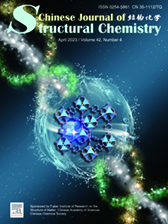
Utilization of porous liquids for catalytic conversion
Yewei Ren, Guosheng Zhou, Ziyang Lu*
Submit a Manuscript
Stride the chirality transfer across length scales by merging the boundaries between solution and interfacial self-assembly
Guanghui Ouyang, Minghua Liu*
Chin. J. Struct. Chem., 2023, 42: 100007. DOI: 10.1016/j.cjsc.2022.100007
April 15, 2023
Chiral self-assembly; Nanoscale; Nanotopology; Nanoarchitectonics
ABSTRACT
The controlled organization of pre-formed chiral nanoscale objects into complex superstructures and functional materials have opened a new research paradigm in self-assembly and nanotechnology fields, which contributes to the emergence of original concepts such as nanoarchitectonics and molecular nanotopology that cause increasing attentions among chemistry and material scientists. The formation of nanoscale objects by molecular self-assembly usually involves in the bottom-up solution approach while their further hierarchical organization could be achieved by many other subsequent techniques such as seed mediated growth in solution, layer-by-layer self-assembly and interface confined secondary nucleation and growth strategy, with the latter strongly related to interfacial organization approaches. The merging of these two processes under chirality control is able to bring more complexities and functionalities originated from chiral interactions of nanoscale units and subsequent chirality transfer extending to micrometer and even larger scales, which brings insights for the understanding of homochirality origin and the developments of chiral nanoarchitectonics with well-defined nanoscale ordering.






